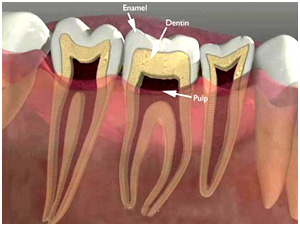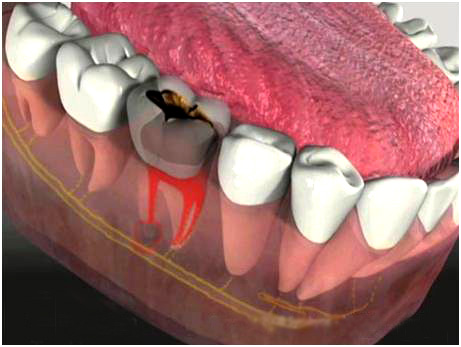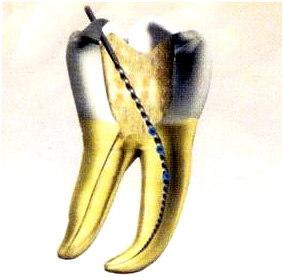
Root Canal Treatment is the procedure done to preserve the infected tooth. This procedure involves removing the damaged or infected pulp, treating any infection and filling the empty canals.
Root Canal Treatment procedure is started by drilling the enamel part of the tooth, that is topmost portion of the tooth. First the Dentist enters the pulp chamber, where the infected pulp is present. The next step is exploration of root canal, removal of the remaining pulp tissue and infected tissue. The infected pulp is then drilled out with the help of long needle shaped drills called files, Remears, K-flex, Headstroem ( H-files), etc
After successful removal of the pulp, the root canal is disinfected with the help of intracanal medicaments like essential oils (eugenol), phenolic compounds, Sodium Hypochlorite and iodides. The disinfection procedure is done by using a plastic pipette or a syringe.

What Are the Signs That a Root Canal Is Needed?
If you have an infection of the pulp, you may not feel any pain at first. But if it is not treated, the infection will cause pain and swelling. In some cases, an abscess will form.
Your tooth might need a root canal if
- It hurts when you bite down on it, touch it or push on it
- It is sensitive to heat
- It is sensitive to cold for more than a couple of seconds
- There is swelling near the tooth
- It is discolored (whether it hurts or not)
- It is broke
 To determine whether your tooth needs root canal treatment, your dentist will often place hot or cold substances against the tooth. The purpose is to see if it is more or less sensitive than a normal tooth. He or she will examine the tissues around the tooth and gently tap on the tooth to test for symptoms. To determine whether your tooth needs root canal treatment, your dentist will often place hot or cold substances against the tooth. The purpose is to see if it is more or less sensitive than a normal tooth. He or she will examine the tissues around the tooth and gently tap on the tooth to test for symptoms.
You also will be given X-rays of the bone around the tooth. The X-rays may show a widening of the ligament that holds the tooth in place or a dark spot at the tip of the root. If either of these is present, your dentist probably will recommend a root canal procedure.
Your dentist may need more information about the tooth. He or she may use an electric pulp tester. This hand-held device sends a small electric current through the tooth. It helps your dentist decide whether the pulp is alive. This test does not cause pain or a shock. You may feel a tingling sensation. It will stop when the tester is removed from the tooth.
An electric pulp tester should not be used if you have a cardiac pacemaker or any other electronic life-support device.
|